10 Biggest Historical Mysteries In The World That Can Not Be Solved
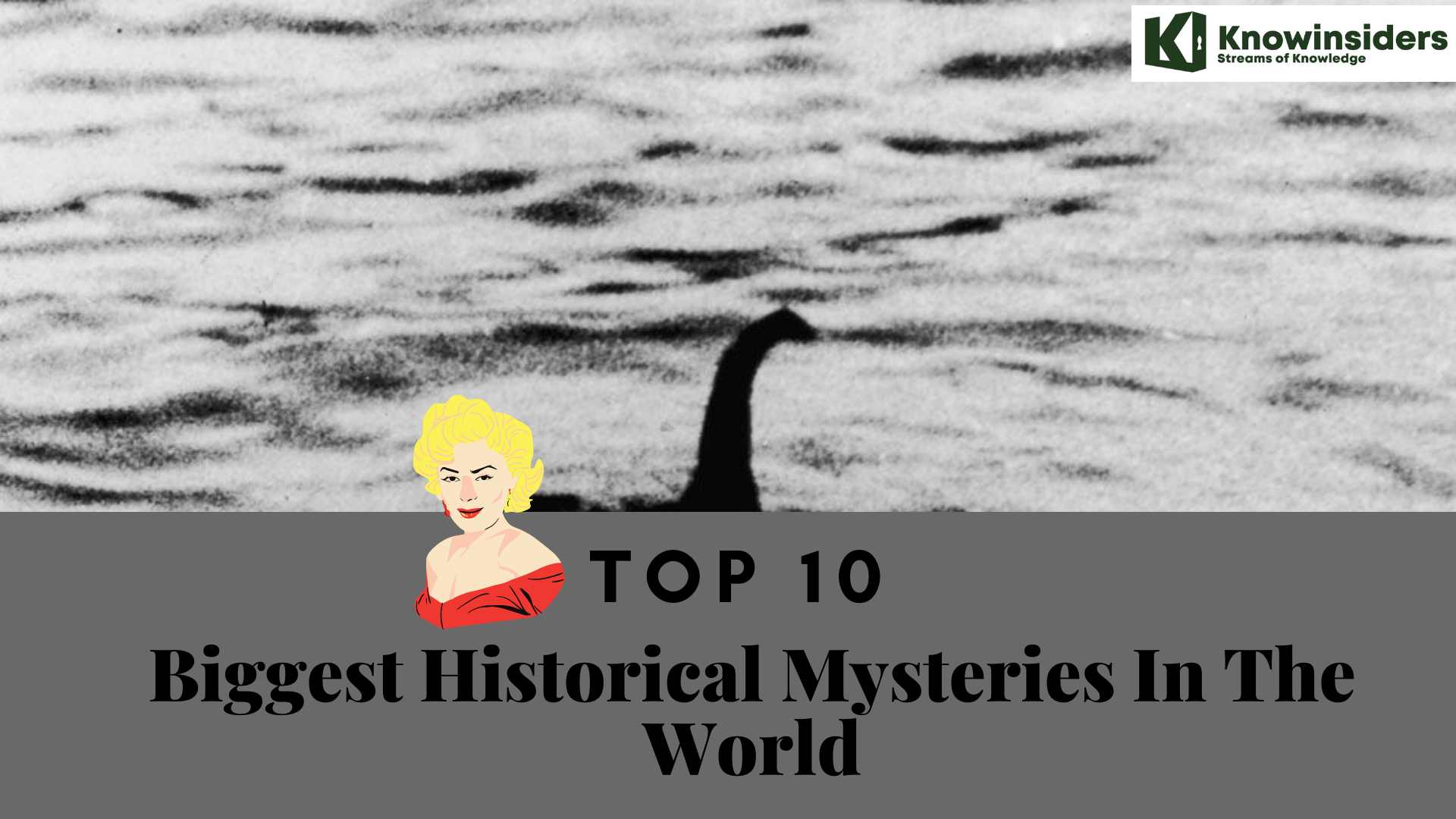 |
| Top 10 biggest historical mysteries in the world |
Some historical mysteries may never be solved. Sometimes, that’s because the relevant excavated material has been lost or an archaeological site has been destroyed. Other times, it’s because new evidence is unlikely to come forward or the surviving evidence is too vague to lead scholars to a consensus.
The lack of answers only makes these enigmas more intriguing. Here, take a look at 10 of these historical questions that may never have definitive explanations.
The List of Top 10 biggest historical mysteries in the world
10. Who shot JFK?
9. The mystery of Marilyn Monroe
8. Natalie Wood's death
7. What happened to Amelia Earhart?
6. Where is Jimmy Hoffa?
5. Who was Jack the Ripper?
4. The ghost ship Mary Celeste
3. What's the deal with the Bermuda Triangle?
2. Is the Loch Ness Monster a real creature?
1. Is there a City of Atlantis?
What are the top 10 biggest historial mysteries in the world?
10. Who shot JFK?
 |
| Photo: History |
John Fitzgerald Kennedy, the 35th president of the United States, was assassinated on Friday, November 22, 1963, at 12:30 p.m. CST in Dallas, Texas, while riding in a presidential motorcade through Dealey Plaza. Kennedy was riding with his wife Jacqueline, Texas Governor John Connally, and Connally's wife Nellie when he was fatally shot from a nearby building by Lee Harvey Oswald, a former US Marine. Governor Connally was seriously wounded in the attack. The motorcade rushed to Parkland Memorial Hospital, where Kennedy was pronounced dead about 30 minutes after the shooting; Connally recovered.
The Dallas Police Department arrested Oswald 70 minutes after the initial shooting. Oswald was charged under Texas state law with the murder of Kennedy and that of J. D. Tippit, a Dallas police officer. At 11:21 a.m. November 24, 1963, as live television cameras were covering his transfer from the city jail to the county jail, Oswald was fatally shot in the basement of Dallas Police Headquarters (then in the Dallas Municipal Building) by Dallas nightclub operator Jack Ruby. Oswald was taken to Parkland Memorial Hospital, where he soon died. Ruby was convicted of Oswald's murder, though it was later overturned on appeal, and Ruby died in prison in 1967 while awaiting a new trial.
After a 10-month investigation, the Warren Commission concluded that Oswald assassinated Kennedy, that Oswald had acted entirely alone, and that Ruby had acted alone in killing Oswald. Kennedy was the eighth and most recent US president to die in office, and the fourth (following Lincoln, Garfield, and McKinley) to be assassinated. Vice President Lyndon B. Johnson automatically became president upon Kennedy's death.
In its 1979 report, the United States House Select Committee on Assassinations (HSCA) agreed with the Warren Commission that Oswald's three rifle shots caused the injuries that Kennedy and Connally sustained. After analysis of a dictabelt audio recording the HSCA concluded that Kennedy was likely "assassinated as a result of a conspiracy". The committee could not identify a second gunman or group involved in the possible conspiracy, although the HSCA concluded that analysis pointed to the existence of an additional gunshot and “a high probability that two gunmen fired at [the] President".
The U.S. Justice Department concluded active investigations and stated "that no persuasive evidence can be identified to support the theory of a conspiracy" in the assassination. However, Kennedy's assassination is still the subject of widespread debate and has spawned numerous conspiracy theories and alternative scenarios. Polls conducted from 1966 to 2004 found that up to 80 percent of Americans suspected that there was a plot or cover-up.
9. The mystery of Marilyn Monroe
 |
| Photo: Getty Images |
On August 5, 1962, movie actress Marilyn Monroe is found dead in her home in Los Angeles. She was discovered lying nude on her bed, face down, with a telephone in one hand. Empty bottles of pills, prescribed to treat her depression, were littered around the room. After a brief investigation, Los Angeles police concluded that her death was “caused by a self-administered overdose of sedative drugs and that the mode of death is probable suicide.”
In recent decades, there have been a number of conspiracy theories about her death, most of which contend that she was murdered by John and/or Robert Kennedy, with whom she allegedly had love affairs. These theories claim that the Kennedys killed her (or had her killed) because they feared she would make public their love affairs and other government secrets she was gathering. On August 4, 1962, Robert Kennedy, then attorney general in his older brother’s cabinet, was in fact in Los Angeles. Two decades after the fact, Monroe’s housekeeper, Eunice Murray, announced for the first time that the attorney general had visited Marilyn on the night of her death and quarreled with her, but the reliability of these and other statements made by Murray are questionable.
Decades after her death, Marilyn Monroe remains a major cultural icon.
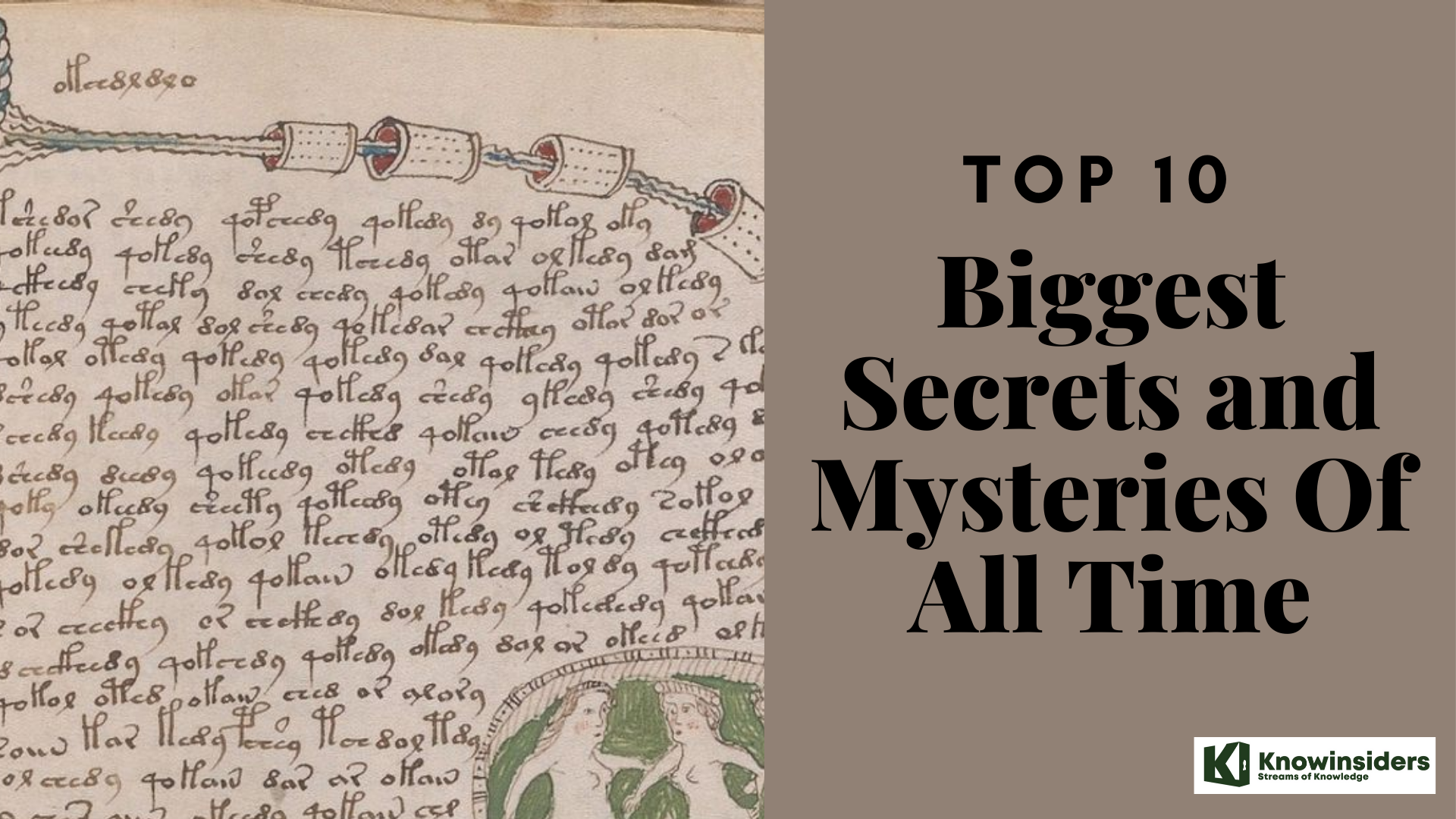 10 Biggest Secrets And Mysteries In The World Of All Time 10 Biggest Secrets And Mysteries In The World Of All Time The world has some of the best mysteries, and many of them still remain unsolved. Here is top 10 biggest secrets and mysteries of all ... |
8. Natalie Wood's death
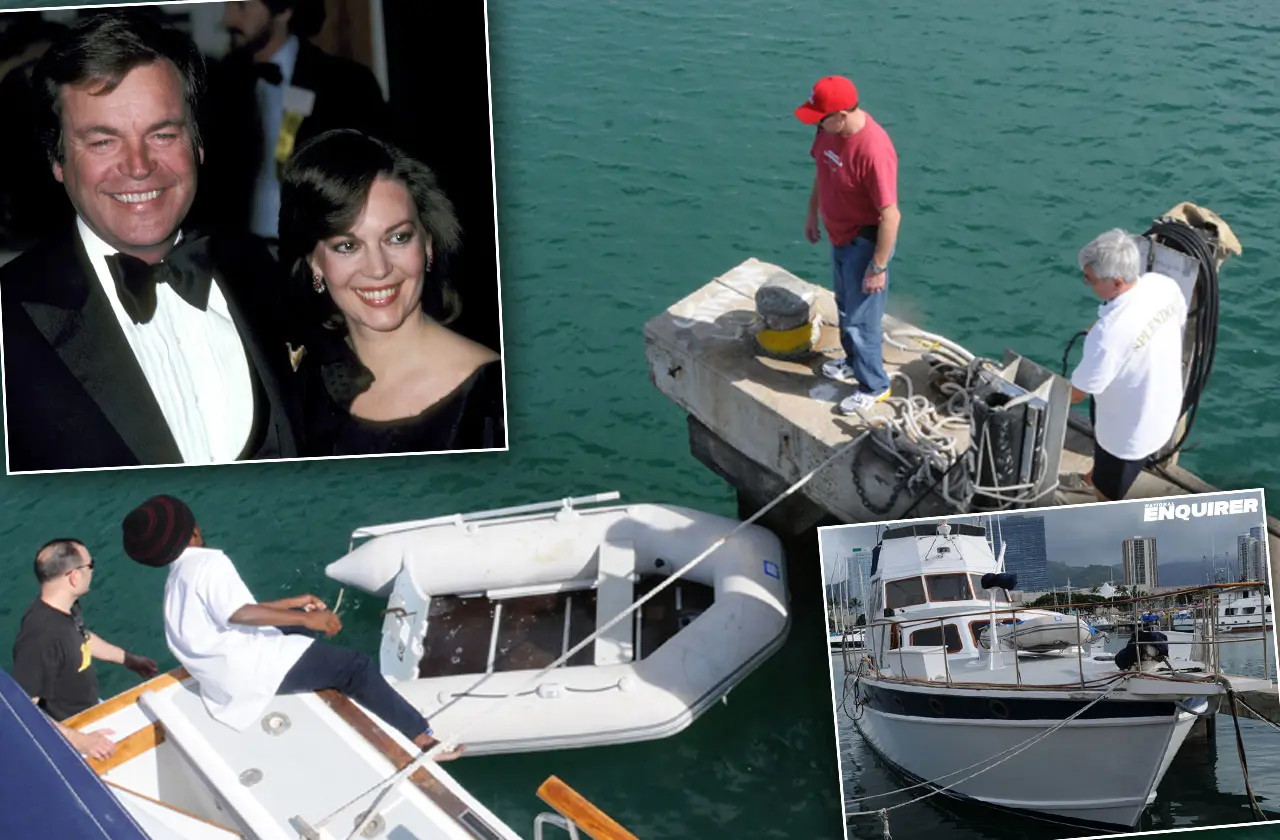 |
| SOURCE: THE NATIONAL ENQUIRER |
On November 29, 1981, the body of actress Natalie Wood, star of such acclaimed films as Miracle on 34th Street, Rebel Without a Cause and West Side Story, was found floating in the Pacific Ocean off California's Catalina Island, in a flannel nightgown, a down jacket and wool socks.
It soon emerged that Wood had spent Thanksgiving weekend aboard her yacht, Splendour, with her husband, actor Robert Wagner, her Brainstorm co-star, Christopher Walken, and the ship's young captain, Dennis Davern, before an accident of some sort left her lifeless in the water.
Although an accidental drowning seemed fully plausible, nagging questions lingered for those paying attention.
Noguchi himself raised some of those questions in his 1983 book, Coroner. Why, he wondered, did Wood slip out to the yacht's stern in the middle of the night and untie the dinghy? Where was she going? And why did it take so long for the men aboard to realize she was gone?
Wood's sister Lana, who followed by publishing Natalie: A Memoir by Her Sister (1984), was also puzzled by the supposed chain of events. How was it possible that Wood, with her long-known fear of "dark water," would venture out into those very environs, alone, on a starless night?
In 2009, Davern finally published his long-gestating tell-all, Goodbye Natalie, Goodbye Splendour. Two years later, he was among the 700-plus people who signed a petition over the flawed investigation into Wood's death, prompting the L.A. County Sheriff's Department to reopen the case in November.
The following summer, the L.A. County coroner added emphasis to the newfound urgency by changing the cause of death to "drowning and other undetermined factors," citing a closer examination of bruises that suggested Wood was assaulted.
Yet another wrinkle emerged in February 2018, when the sheriff's department reclassified the death as "suspicious" and named Wagner "a person of interest" following interviews with former neighbors and fellow boaters.
At almost 90 years old, Wagner was no longer interested in talking to the police about his wife’s death. Still, it was clear that other people were, leaving open the possibility of finding some real answers after four decades of question marks.
7. What happened to Amelia Earhart?
 |
| Photo: Wikipedia |
On the morning of July 2, 1937, Amelia Earhart and her navigator, Fred Noonan, took off from Lae, New Guinea, on one of the last legs in their historic attempt to circumnavigate the globe. Their next destination was Howland Island in the central Pacific Ocean, some 2,500 miles away. A U.S. Coast Guard cutter, the Itasca, waited there to guide the world-famous aviator in for a landing on the tiny, uninhabited coral atoll.
But Earhart never arrived on Howland Island. Battling overcast skies, faulty radio transmissions and a rapidly diminishing fuel supply in her twin-engine Lockheed Electra plane, she and Noonan lost contact with the Itasca somewhere over the Pacific. Despite a search-and-rescue mission of unprecedented scale, including ships and planes from the U.S. Navy and Coast Guard scouring some 250,000 square miles of ocean, they were never found.
In its official report at the time, the Navy concluded that Earhart and Noonan had run out of fuel, crashed into the Pacific and drowned. A court order declared Earhart legally dead in January 1939, 18 months after she disappeared. From the beginning, however, debate has raged over what actually happened on July 2, 1937 and afterward. Several alternate theories have surfaced, and many millions of dollars have been spent searching for evidence that would reveal the truth of Earhart’s fate.
Amid ongoing controversy, spanning more than 80 years of debate among researchers and historians, the crash-and-sink theory remains the most widely accepted explanation of Earhart’s fate. But over three expeditions since 2002, the deep-sea exploration company Nauticos has used sonar to scan the area off Howland Island near where Earhart’s last radio message came from, covering nearly 2,000 square nautical miles without finding a trace of the wreckage of the Electra. Until that wreckage—or some other definitive piece of evidence—is found, the mystery surrounding Amelia Earhart’s final flight will likely endure.
 Top 10 Most Mysterious People In The World Top 10 Most Mysterious People In The World There are things on earth that we have never found out, as for the list of the 10 most mysterious people in the world right ... |
6. Where is Jimmy Hoffa?
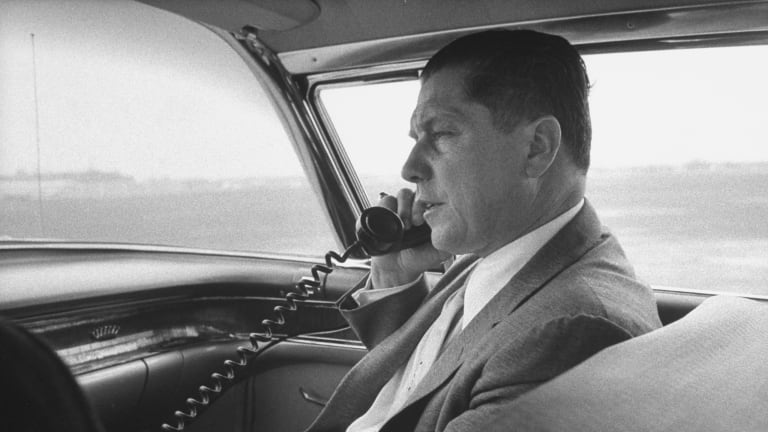 |
| Photo: Biography |
Ex-Teamsters boss Jimmy Hoffa was last seen on July 30, 1975, outside a Detroit-area restaurant. His disappearance is a mystery that triggers occasional digs by FBI agents looking for his remains.
The last such search centered on a field near Detroit in June 2013, based on a tip from alleged mobster Tony Zerilli that Hoffa was hit with a shovel and buried alive there. Nothing was uncovered after three days of work with a backhoe.
The FBI said at the time of his disappearance that it could have been linked to Hoffa's efforts to regain power in the Teamsters and to the mob's influence over the union's pension funds. Hoffa was thought to be trying to get back into a power position with the labor movement after his release from prison. He was sent to prison in 1967 for jury tampering and fraud. President Richard Nixon pardoned him in 1971.
Popular theories over the years include that Hoffa was disposed of under the old Giants Stadium in New Jersey, buried in a Michigan horse farm, taken to a Florida swamp as alligator food or that his body was incinerated. Another early theory was that Hoffa simply took off for South America with a go-go dancer.
Hoffa's middle name, by the way, is Riddle.
5. Who was Jack the Ripper?
 |
| Photo: Getty Images |
Jack the Ripper was an unidentified serial killer active in the largely impoverished areas in and around the Whitechapel district of London in 1888. In both the criminal case files and contemporary journalistic accounts, the killer was called the Whitechapel Murderer and Leather Apron.
Attacks ascribed to Jack the Ripper typically involved female prostitutes who lived and worked in the slums of the East End of London. Their throats were cut prior to abdominal mutilations. The removal of internal organs from at least three of the victims led to proposals that their killer had some anatomical or surgical knowledge. Rumours that the murders were connected intensified in September and October 1888, and numerous letters were received by media outlets and Scotland Yard from individuals purporting to be the murderer. The name "Jack the Ripper" originated in a letter written by an individual claiming to be the murderer that was disseminated in the media. The letter is widely believed to have been a hoax and may have been written by journalists in an attempt to heighten interest in the story and increase their newspapers' circulation. The "From Hell" letter received by George Lusk of the Whitechapel Vigilance Committee came with half of a preserved human kidney, purportedly taken from one of the victims. The public came increasingly to believe in a single serial killer known as "Jack the Ripper", mainly because of both the extraordinarily brutal nature of the murders and media coverage of the crimes.
Extensive newspaper coverage bestowed widespread and enduring international notoriety on the Ripper, and the legend solidified. A police investigation into a series of eleven brutal murders committed in Whitechapel and Spitalfields between 1888 and 1891 was unable to connect all the killings conclusively to the murders of 1888. Five victims—Mary Ann Nichols, Annie Chapman, Elizabeth Stride, Catherine Eddowes, and Mary Jane Kelly—are known as the "canonical five" and their murders between 31 August and 9 November 1888 are often considered the most likely to be linked. The murders were never solved, and the legends surrounding these crimes became a combination of historical research, folklore, and pseudohistory, capturing public imagination to the present day.
4. The ghost ship Mary Celeste
 |
| Photo: Wikipedia |
The British brig Dei Gratia was about 400 miles east of the Azores on December 5, 1872, when crew members spotted a ship adrift in the choppy seas. Capt. David Morehouse was taken aback to discover that the unguided vessel was the Mary Celeste, which had left New York City eight days before him and should have already arrived in Genoa, Italy. He changed course to offer help.
Morehouse sent a boarding party to the ship. Belowdecks, the ship's charts had been tossed about, and the crewmen's belongings were still in their quarters. The ship's only lifeboat was missing, and one of its two pumps had been disassembled. Three and a half feet of water was sloshing in the ship's bottom, though the cargo of 1,701 barrels of industrial alcohol was largely intact. There was a six-month supply of food and water—but not a soul to consume it.
Thus was born one of the most durable mysteries in nautical history: What happened to the ten people who had sailed aboard the Mary Celeste? Through the decades, a lack of hard facts has only spurred speculation as to what might have taken place. Theories have ranged from mutiny to pirates to sea monsters to killer waterspouts. Arthur Conan Doyle's 1884 short story based on the case posited a capture by a vengeful ex-slave, a 1935 movie featured Bela Lugosi as a homicidal sailor.
Speculation over the past 140 years about why the ship was abandoned include theories involving pirates, a crew mutiny and even monster from the sea. A documentary titled "The True Story of the Mary Celeste" released in 2007 ruled out those possibilities but stopped short of a conclusive explanation.
3. What's the deal with the Bermuda Triangle?
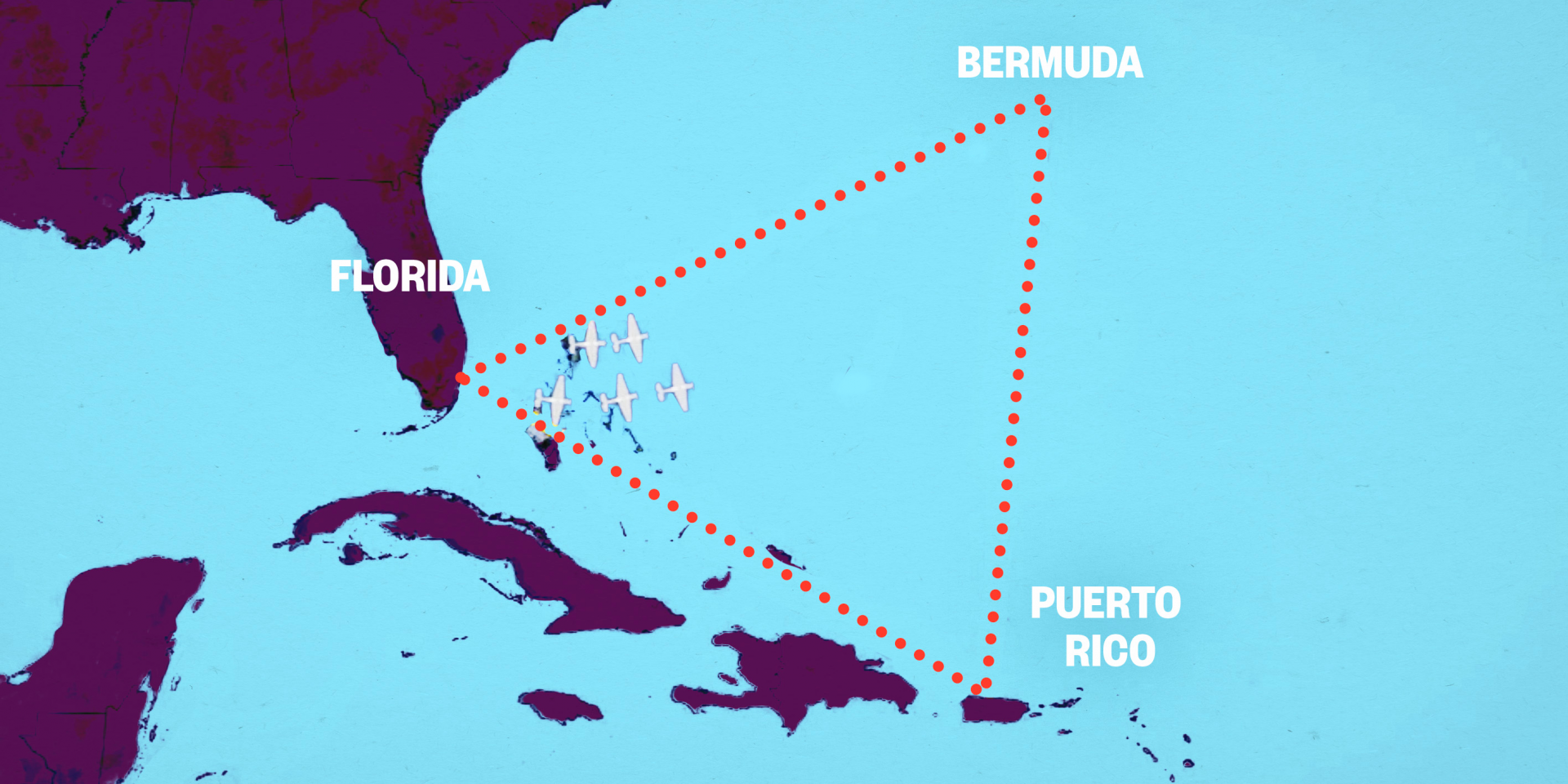 |
| Photo: TODAY |
The legend of the Bermuda Triangle began with the unexplained disappearance of a group of military planes carrying 14 men off the coast of south Florida in December 1945.
"We are entering white water, nothing seems right," the flight leader supposedly said before radio contact was lost. Thirteen more servicemen sent to search for the missing fliers also vanished.
Other mysterious disappearances and encounters have been linked to the area of ocean that is a triangle anchored by Bermuda, Florida and Puerto Rico.
Two British South American Airways passenger planes disappeared in the area a year apart in 1948 and 1949. No explanations or wreckage were ever found.
Victims credited to the area in numerous books and documentaries have included a large oil tanker, a pleasure yacht and a small passenger plane. Books, including "The Devil's Triangle," "Limbo of the Lost," and "The Riddle of the Bermuda Triangle," suggest supernatural explanations. Aliens in spaceships, wormholes and the mythical lost continent of Atlantis have been blamed.
2. Is the Loch Ness Monster a real creature?
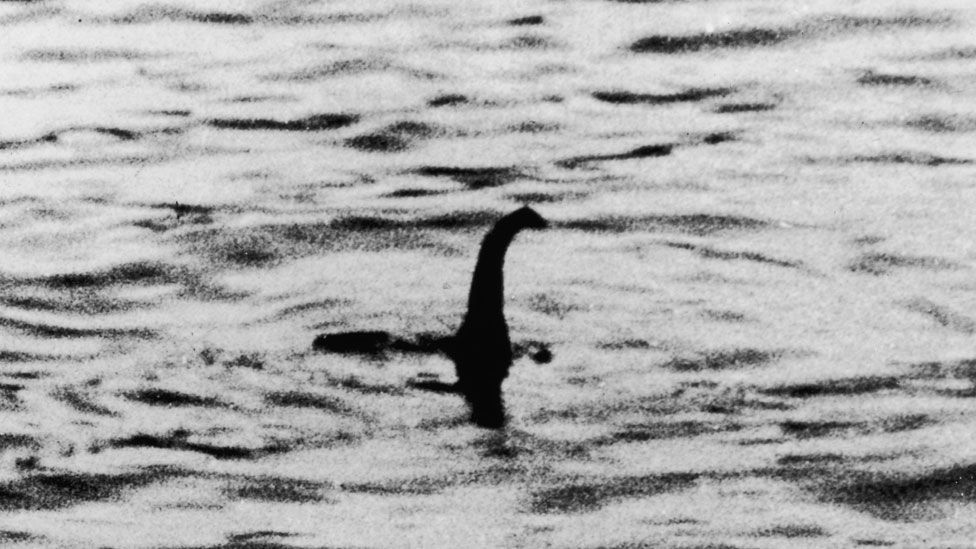 |
| Photo: Getty Images |
Loch Ness monster, byname Nessie, large marine creature believed by some people to inhabit Loch Ness, Scotland. However, much of the alleged evidence supporting its existence has been discredited, and it is widely thought that the monster is a myth.
Reports of a monster inhabiting Loch Ness date back to ancient times. Notably, local stone carvings by the Pict depict a mysterious beast with flippers. The first written account appears in a biography of St. Columba from 565 AD. According to that work, the monster bit a swimmer and was prepared to attack another man when Columba intervened, ordering the beast to “go back.” It obeyed, and over the centuries only occasional sightings were reported. Many of these alleged encounters seemed inspired by Scottish folklore, which abounds with mythical water creatures.
The Loch Ness area attracted numerous monster hunters. Over the years, several sonar explorations (notably in 1987 and 2003) were undertaken to locate the creature, but none were successful. In addition, numerous photographs allegedly showed the beast, but most were discredited as fakes or as depicting other animals or objects. Notably, in 1994 it was revealed that Wilson’s photograph was a hoax spearheaded by a revenge-seeking Wetherell; the “monster” was actually a plastic-and-wooden head attached to a toy submarine. In 2018 researchers conducted a DNA survey of Loch Ness to determine what organisms live in the waters. No signs of a plesiosaur or other such large animal were found, though the results indicated the presence of numerous eels. This finding left open the possibility that the monster is an oversized eel. Despite the lack of conclusive evidence, the Loch Ness monster remained popular—and profitable. In the early 21st century it was thought that it contributed nearly $80 million annually to Scotland’s economy.
1. Is there a City of Atlantis?
 |
| An artist's conception shows the city of Atlantis as it has been envisioned in legend.National Geographic |
Writing in the fourth century B.C., the Greek philosopher Plato told a story of land named Atlantis that existed in the Atlantic Ocean and supposedly conquered much of Europe and Africa in prehistoric times. In the story, the prehistoric Athenians strike back against Atlantis in a conflict that ends with Atlantis vanishing beneath the waves.
While no serious scholar believes that this story is literally true, some have speculated that the legend could have been inspired, in part, by real events that happened in Greek history. One possibility is that the Minoan civilization(as it’s now called), which flourished on the island of Crete until about 1400 B.C., could have inspired the story of Atlantis. Although Crete is in the Mediterranean, and not the Atlantic, Minoan settlements suffered considerable damage during the eruption of Thera, a volcano in Greece.
Additionally, archaeologists found that the Minoans were eventually overcome (or forced to join with) a group of people called the Mycenaeans, who were based on mainland Greece. It’s unlikely that this debate will ever be fully settled.
 10 Biggest Secrets And Mysteries In The World Of All Time 10 Biggest Secrets And Mysteries In The World Of All Time The world has some of the best mysteries, and many of them still remain unsolved. Here is top 10 biggest secrets and mysteries of all ... |
 Top 10 Most Intelligent Animals On Planet Top 10 Most Intelligent Animals On Planet There are a lot of beautiful animals on our planet, and some of them demonstrate extraordinary abilities. Check out the 10 most intelligent animals in ... |
 Top 10 Best Educated Hollywood Actors Top 10 Best Educated Hollywood Actors There are several actors in Hollywood who have attained world acclaim for their superior acting skills and the ability to entertain world audiences. Check out ... |
 Top 10 Best Educated Hollywood Actresses Top 10 Best Educated Hollywood Actresses Some of the celebrities of hot and sexy women have achieved a high level of education. Check out right below the 10 best Hollywood actresses ... |


























